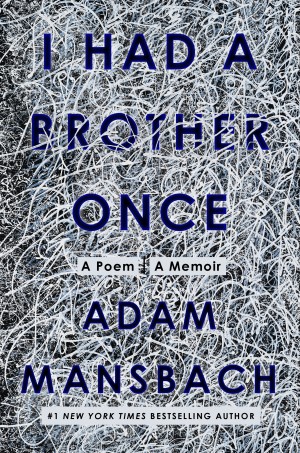Michelle Brafman’s debut novel Washing the Dead is being published this week by Prospect Park Books. She will be blogging here all week for Jewish Book Council’s Visiting Scribe series.
 I am a fairly observant Jew with a decent Jewish education, yet I only learned about the tahara, our burial rituals, eight years ago, when a friend casually mentioned them to me. And now, even after I’ve written a novel featuring the tahara, the holiness of this deed continues to reveal itself to me in waves.
I am a fairly observant Jew with a decent Jewish education, yet I only learned about the tahara, our burial rituals, eight years ago, when a friend casually mentioned them to me. And now, even after I’ve written a novel featuring the tahara, the holiness of this deed continues to reveal itself to me in waves.
The tahara is called the “good deed of truth” because tending to the dead is a favor that the recipient can neither acknowledge nor repay. I won’t lie, though, my fascination with this righteous act initially stemmed from its mystery. The chevra kadisha often operates as a secret society in order to preserve the anonymity of the mitzvah, and the rites are sensual: sponge-bathing, rinsing, shrouding, placing dirt in a pine casket.
In researching the novel, I approached the head of my synagogue’s chevra kadisha, and we talked for hours about the ritual. She invited me to help perform a tahara, informing me that this was the ultimate act of compassion. I understood this intellectually, I really did. When I entered the preparation room, however, my brain switched to writer mode, mentally recording every detail: the scent of the body, the canisters of toothpicks we would use to clean under the nails, the narrow width of the coffin.
In the early days of describing this book, when I told Jews and non-Jews of this ritual, I felt as though I were at a sleepover, sharing a scary, titillating ghost story. It took many drafts for me to discover the core of the book: my character Barbara’s attempt to find her way back to the spiritual and emotional home torched by her mother’s indiscretion. The inciting incident is when Barbara is invited back to her Orthodox community to perform a tahara on the woman who stepped in to mother her after her own mother’s abandonment.
It wasn’t until I read the tahara passage aloud for the first time in public that I realized performing this ritual was the only way for Barbara to loosen a brick in the wall she’d built between herself and her mother and her religious home. This tactile deed fired an atrophied muscle of her heart. In his short story “A Father’s Story” Andre Dubus describes the “wonder of ritual:” “For ritual allows those who cannot will themselves out of the secular to perform the spiritual, as dancing allows the tongue-tied man a ceremony of love.”
Shortly after the galleys of my book arrived, I had coffee with my chevra kadisha guide. We spoke more about the tahara and other Jewish rituals, and though I listened carefully, I knew I was also filing away some of her words, as I do an idea for a story. Later I will make meaning of these mitzvot, the doing and telling, and the gorgeous mystery of the fusion of the two.
Michelle Brafman’s essays and short stories have appeared in the Washington Post, Slate, Tablet, Lilith Magazine, the minnesota review, and elsewhere. She teaches fiction writing at the Johns Hopkins MA in Writing Program. Visit her website at www.michellebrafman.com.
Related Content:
- Chesed Shel Emet: The Truest Act of Kindness, Exploring the Meaning of Taharah by Rabbi Stuart Kelman and Dan Fendel
- The Jewish Way in Death and Mourning by Maurice Lamm
- Kaddish: Women’s Voices by Michal Smart and Barbara Ashkenas
Michelle Brafman’s fiction and essays have appeared in The Washington Post, Slate, Tablet, and others. A regular contributor to the Lilith Magazine blog, she has led its salon discussions at theaters and arts centers throughout the Washington, DC area. She teaches fiction writing at Johns Hopkins University and lives in Glen Echo, Maryland with her husband and two children.



